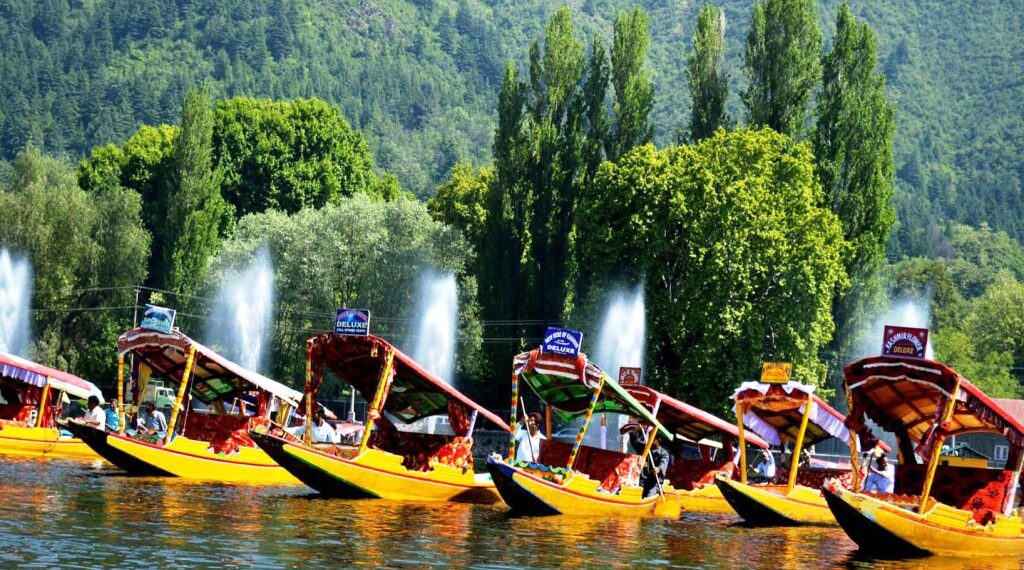The idea of Kashmiriyat or Kashmiriyat is about the mutual coexistence of different faiths and religions together with harmony & a deep admiration and respect for the other culture. The whole concept of Kashmiriyat developed around the sixteenth century to propagate religious harmony and a sense of pride among the individuals.
It was when the Hindu-Muslim coexistence went through its golden phase in terms of exchanging literature, culture, festivals, and cuisines. Key figures such as Lal Ded were equally respected in both religions, and if sources are to be believed when she died, her body turned into a pile of flowers, which was equally distributed amongst her Hindu and Muslim followers And, to this day, this instance serves as the root of Kashmiriyat.
Kashmir enjoys this cultural influx for many reasons, starting from the name Kashmir, named after Rishi Kashyap. The city of Srinagar was established by Ashoka. Later, it was influenced by the Buddhist and Islamist culture, and during the 18th and 19th century has been under the influence of the Sikh Empire. Kashmir in itself is the amalgamation of Shaivism, Buddhism and Sufism.
Kashmiriyat has been an expression of solidarity against the intruders and a feeling of patriotism among the local Kashmiris. Various literary works of that time suggest how Kashmiriyat was not only focused on religious belief but believed humanity to be the most prominent religion and helped and improved the plight of other human ways of worship.
But with time, Kashmiriyat has drastically changed from the idea of mutual existence to today, where it is used to influence the youth in political terms. This change in idea took place in 1947-48 when Kashmiriyat changed to the concept of independence from Pakistan and India. This change in perception has pushed Kashmir to a backdrop, and the mass exodus of Kashmiri Pandits is one such example. Violent attacks on Kashmiri Pandits and Sikhs have weakened the centuries-old fabric together.
The politicisation of Kashmiriyat can be effectively understood from the leaders of the past who used literary pieces to manipulate people towards a political goal. The radicalisation of thoughts in the minds of ordinary Kashmiri youth is to a point where they find it easier to pick up stones against the government rather than allow space for discussion.
This radicalisation has affected Kashmir in such a way that even though it is known as heaven on earth, only seven per cent of its revenue is generated by tourism; the Kashmiri handicrafts industry, which is one of the major employers of the local workforce, is not able to generate the revenues up to the expectation and the exports which could have been used to improve the financial condition of the state is limited to a very negligible percentage. Due to the exchange of radical and anti-national messages over social media groups, this region has seen the most intermittent shutdowns compared to any other state in India.
The possible way to overcome this issue is to imbibe the true Kashmiriyat in people’s minds through actual teachings of the concept in schools and colleges and make them realise that humanity is the base of society.
Individuals must develop a conscience to understand what is right or wrong and how their course of action in present times is going to shape their future. And what kind of society and future generations will be exposed to.
Once again, this idea of Kashmiriyat can be used for solidarity, but solidarity against the radical people. Once again, Kashmir can transform into a land of Saints and Sufism. Now, the focus must not only be limited to the Kashmir valley but should also cater to the parts of Jammu and Ladakh. We must welcome the traditions and culture of both places with open arms.
Social media and articles must propagate the idea of harmony and togetherness, and initiatives must be taken at individual levels to create a new and beautiful Kashmir and revive the true Kashmiriyat. The influx of the working class from different states must also be taken as a blessing in disguise for this fantastic concept of Kashmiriyat.


